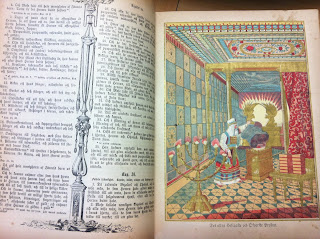Another Christian sect Swedish-Americans found interest in were Baptist Churches. There are two Swedish Baptist churches that were established in Chicago whose buildings exist today: Edgewater Swedish Baptist Church and First Swedish Baptist Church. As is the case with many Swedish churches in Chicago, the parishioners of Swedish descent moved out to the suburbs. These churches also started conducting their services in English to accommodate for the diversity of their new members. Edgewater Baptist dropped "Swedish" from their name in 1940, and have Spanish and Korean congregations. As I was taking a picture of the First Swedish Baptist Church, a member of the congregation approached me and gave me some background on the church that I couldn't find in my research. The First Swedish Baptist Church was established in 1854, but this church was built in 1911. At some point, the First Swedish Baptist Church became Wrigleyville Worship Center, then Christ's Church. Today, the building is owned by MissioDei, a non-denominational Evangelical community.

The Swedish Covenant Church was founded by the Swedish Evangelical Mission Covenant
of America (now ECC). The organization was founded on February 20, 1885 by
Swedish immigrants in Chicago. The Edgewater Swedish Covenant Church dates back
to 1909; today, it is known as Iglesia del Pacto Belen Covenant Church. Englewood Swedish Covenant Church is now the Rust Memorial United Methodist Church, but the stained
glass over two doors still reads “Svenska Missions Kyrkan.”
 |
| Englewood Swedish Covenant Church, now the Rust Memorial United Methodist Church |
The St. Ansgarius Episcopal Church is the oldest remaining Swedish Church building and one of the oldest churches in Chicago. The first church built was located at Indiana (today Grand) near Wells St., but was destroyed in the great Chicago fire of 1871. The first pastor was Gustaf Unonius (1810-1902), a prominent Swedish religious figure. He returned to Sweden nine years later after dispute with newer immigrant Scandinavian Lutherans. The second church was erected in 1872 on Chicago Avenue, but was razed in 1920 after also burning. The current church was built farther north in 1849, but changed its name in 1940s to St. Francis. The last congregation to utilize this church was Cristo Rey Iglesia Episcopal Church. At present, the church is closed and for sale. The Inscription over the main door reads “Jenny Lind Memorial Chapel." Jenny Lind was a famous Swedish opera singer, called the Swedish Nightingale, who donated a priceless communion silver chalice and paten to the church in 1851. When the great fire broke out in 1871 the silver was saved by an old Swedish woman. She hurried inside the burning church, brought out the silver, placed it in a buggy, which she then drove to the prairie outside the city limits, and kept it there until danger was past. The silver must always be kept in this church according to a letter, written in 1851 by the donor herself. Today, however, the only remaining items are the communion chalice and paten, which are kept at the Episcopal Church Center































